Are you contemplating a shareholder agreement but unsure where to start? Navigating the complexities of these agreements can feel daunting, especially without the right guidance. Fortunately, crafting a well-structured shareholder agreement is essential for protecting everyone's interests and ensuring a smooth partnership. Let's delve deeper into the key components you should consider ' read on to empower yourself with knowledge and insights!

Purpose and Scope of Agreement
The Shareholder Agreement serves as a foundational document for governing the relationship among shareholders of the corporation, outlining rights, obligations, and mechanisms for dispute resolution. This agreement encompasses essential elements such as ownership percentages, decision-making processes, and transfer restrictions. Key provisions address the scope of capital contributions, access to financial information, and dividend distributions, ensuring transparency in financial operations. The agreement also delineates procedures for handling shareholder disputes, buy-sell agreements, and the appointment of directors, fostering harmonious governance. This document aims to safeguard individual shareholder interests while promoting the long-term sustainability of the enterprise.
Key Provisions and Obligations
A shareholder agreement outlines essential provisions and obligations that govern the relationship among stakeholders in a corporation, particularly private companies. Key provisions include share transfer restrictions, ensuring that shareholders cannot sell their shares without giving the right of first refusal to existing shareholders, thereby maintaining control within the original group. Voting rights detail how decisions are made, often requiring a supermajority for significant corporate changes, protecting minority shareholder interests. Obligations such as confidentiality clauses mandate that shareholders keep sensitive company information private, while competition restrictions prevent shareholders from engaging in rival businesses during and post-timeline of their involvement. Additional provisions may address dispute resolution methods like arbitration, ensuring conflicts are handled efficiently, as well as outlining the procedures for resolving deadlocks when shareholders cannot agree on critical issues. These elements collectively create a framework that promotes cooperation, trust, and stability within the company structure.
Shareholder Rights and Responsibilities
Shareholders hold significant rights and responsibilities that govern their involvement in a corporation, particularly as outlined in shareholder agreements. Each shareholder has the right to vote on crucial matters, including board member elections, mergers, or other major corporate changes, often determined by ownership percentage. Shareholders also have the right to receive dividends--financial distributions--proportional to their shareholdings when declared by the board of directors. Conversely, responsibilities come with these rights; shareholders are expected to uphold the corporation's best interests and comply with applicable laws and regulations, ensuring ethical conduct. In addition, minority shareholders typically enter into agreements that provide protections against unfair treatment or dilution of their shares, fostering a balance of power within the company. These agreements often stipulate specifics regarding information access, transfer of shares, and dispute resolution processes, enabling a structured approach to shareholder relations and corporate governance. Ensuring clarity in these areas helps mitigate conflicts and establishes a framework for long-term success.
Dispute Resolution Mechanisms
Shareholder agreements often include specific dispute resolution mechanisms to address conflicts between parties, ensuring smoother operations within corporations. Mediation (a voluntary process involving a neutral third party) often precedes more formal avenues, such as arbitration (a legally binding process governed by established rules). The agreement may also specify binding arbitration under organizations like the American Arbitration Association, emphasizing confidentiality and finality in outcomes. Jurisdiction can vary, but many agreements cite a particular location, such as New York City, for enforcement. The incorporation of clauses for attorney fees shifts financial burdens to the losing party, promoting fair conflict resolution. Ensuring clear definitions of "dispute" and outlining procedural steps can enhance understanding and adherence to these mechanisms.
Execution and Enforcement Procedures
The execution and enforcement procedures within a shareholder agreement are critical to ensuring compliance and protecting the interests of all parties involved. A properly executed shareholder agreement typically includes signatures from all shareholders, often requiring the presence of a notary public, particularly in jurisdictions like California, where certain documents necessitate notarization for legal enforceability. In addition, clear procedures should be outlined for dispute resolution, with options such as mediation and arbitration specified, providing a structured approach to addressing conflicts without resorting to litigation. Furthermore, the agreement should detail the consequences of breaches, which may include financial penalties, buyout provisions, or forced divestitures of shares. Document retention practices must also be established, mandating each party to keep copies of the executed agreement accessible for future reference, ensuring transparency and accountability among shareholders.

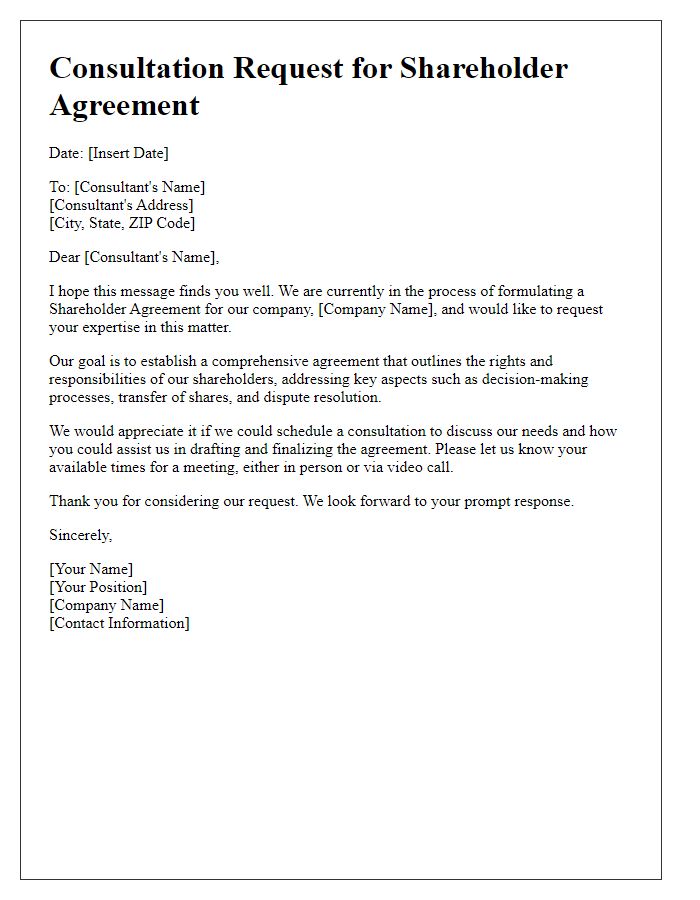
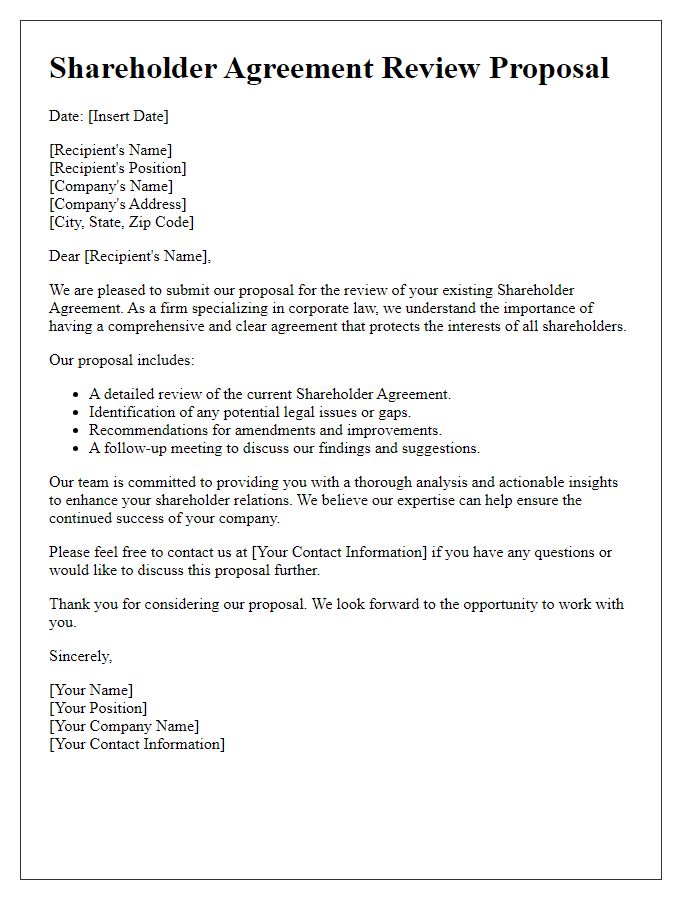
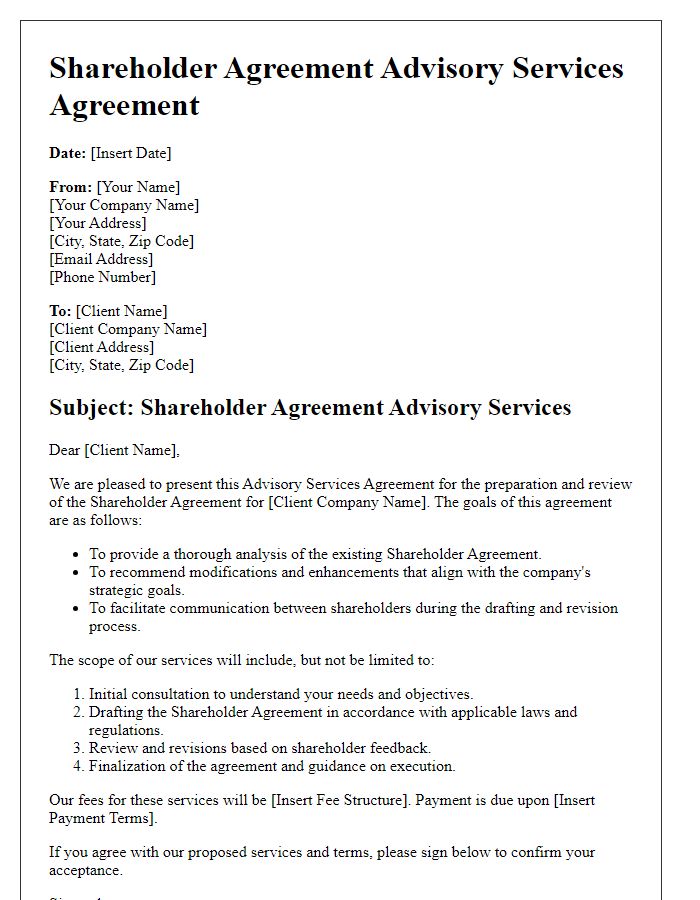
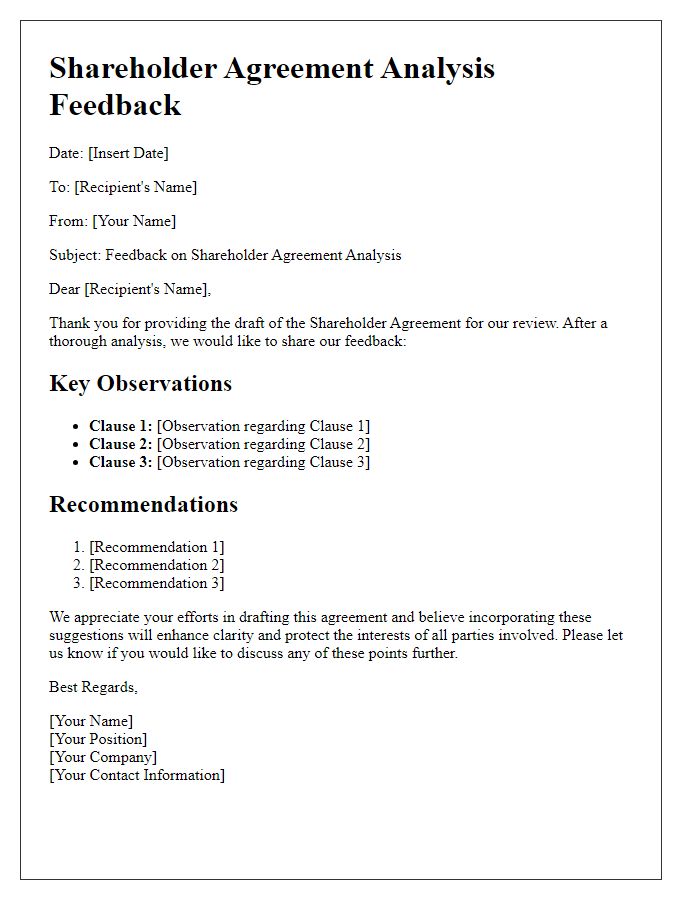
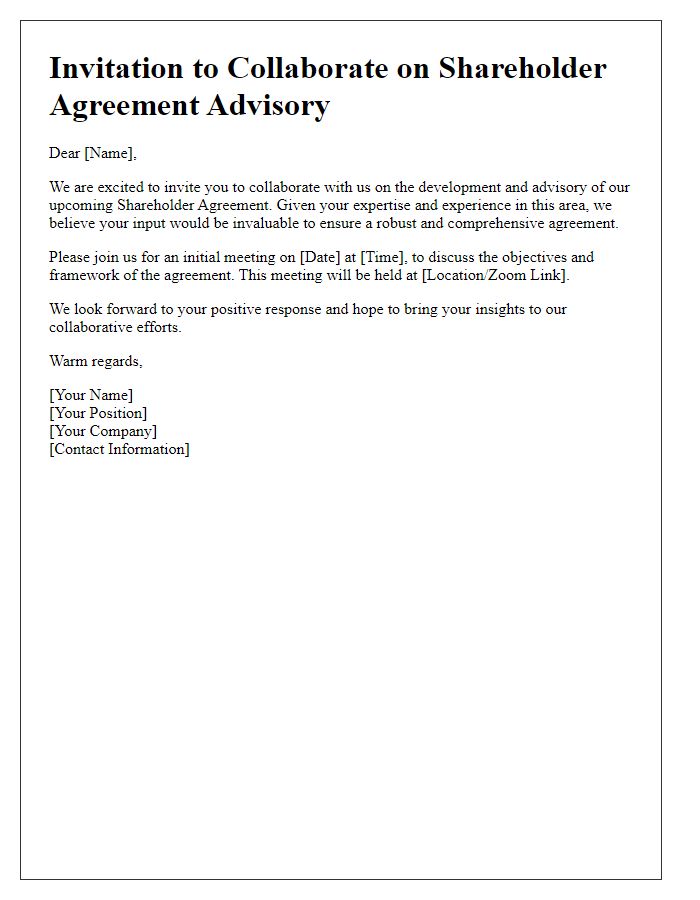
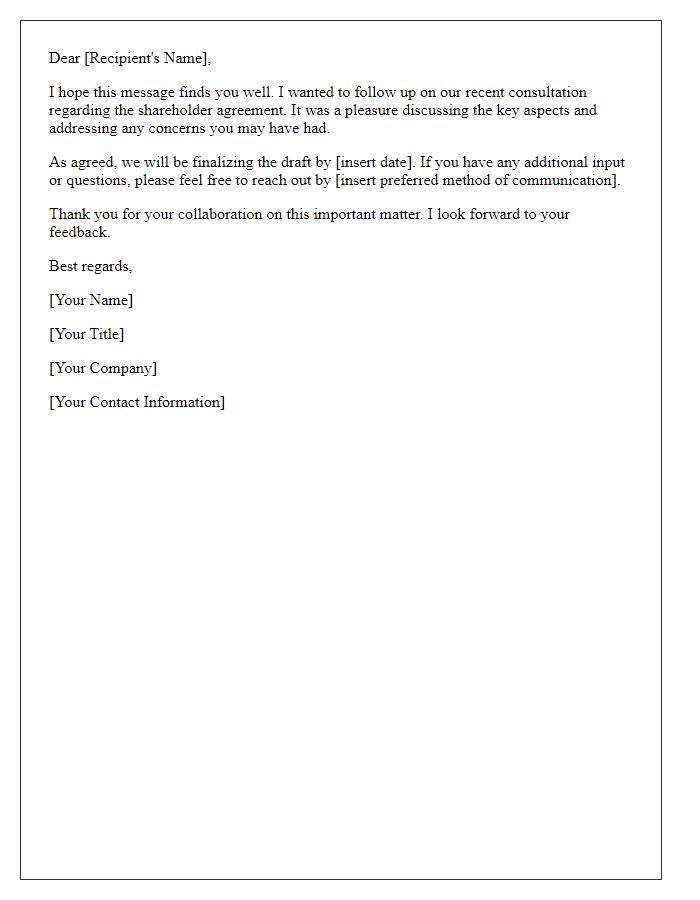


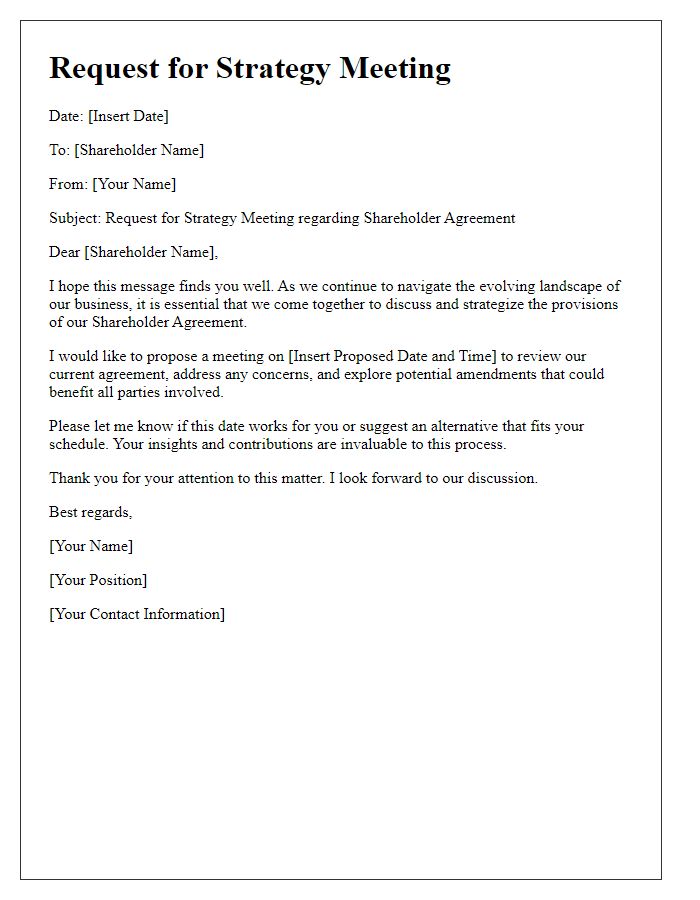
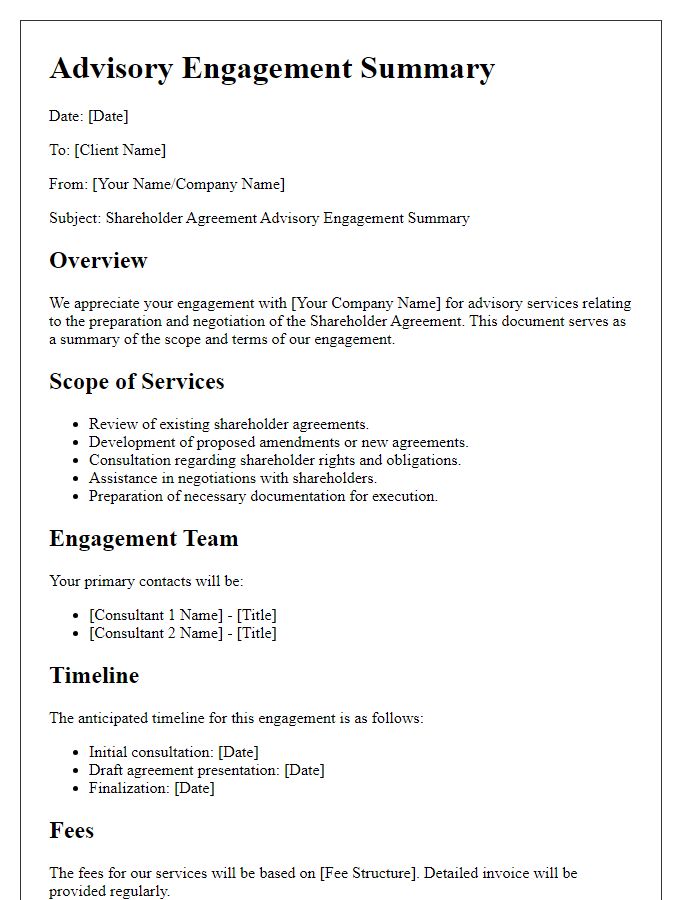




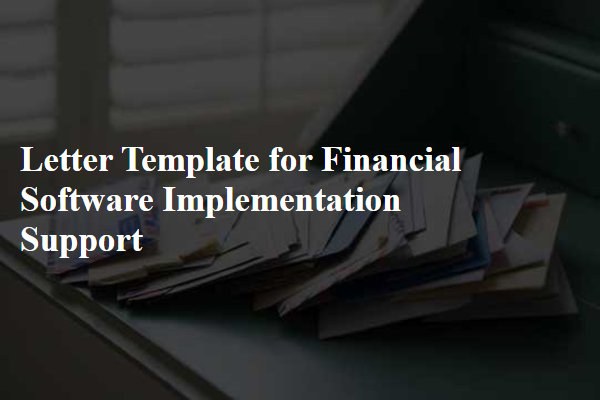
Comments